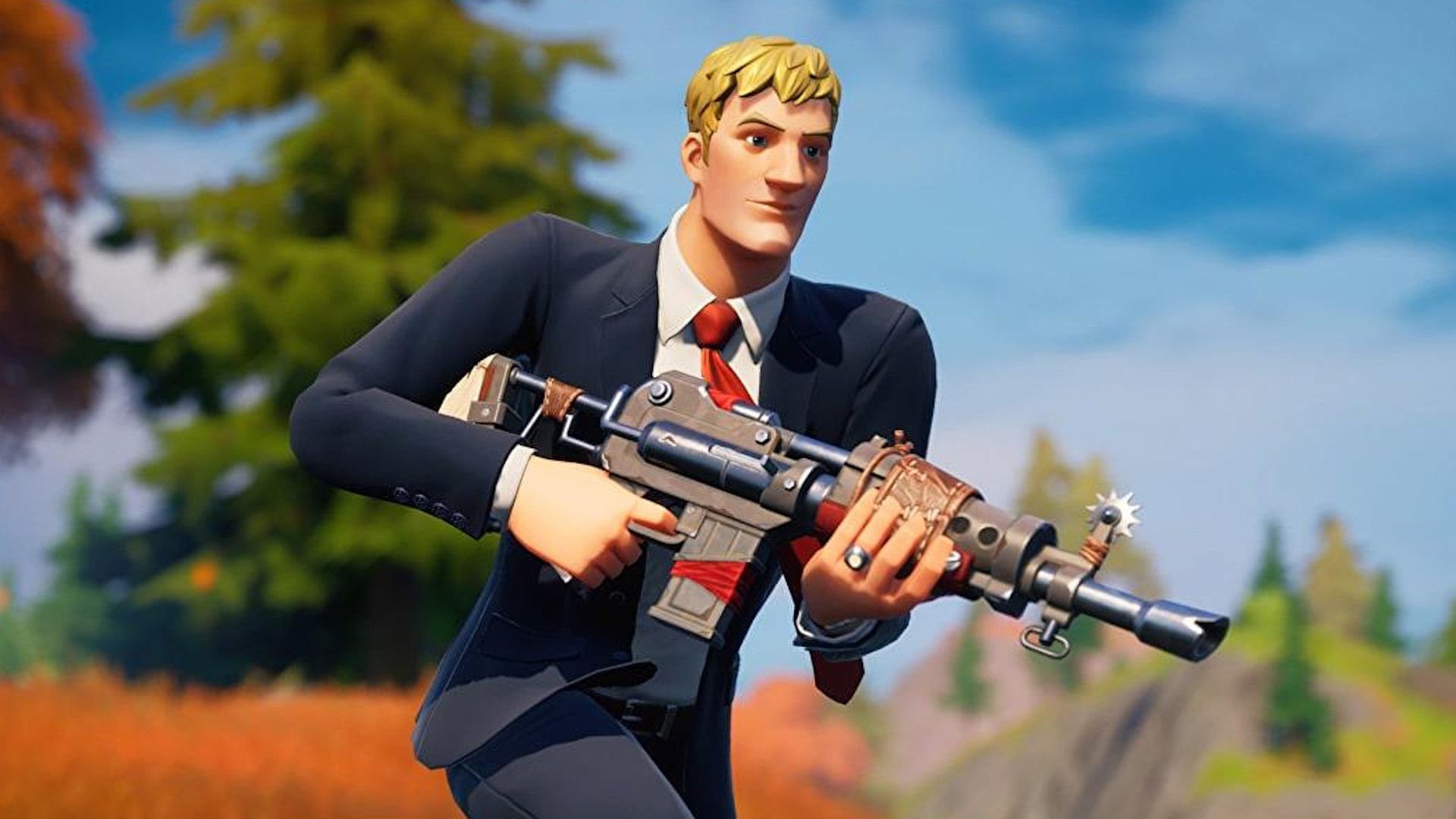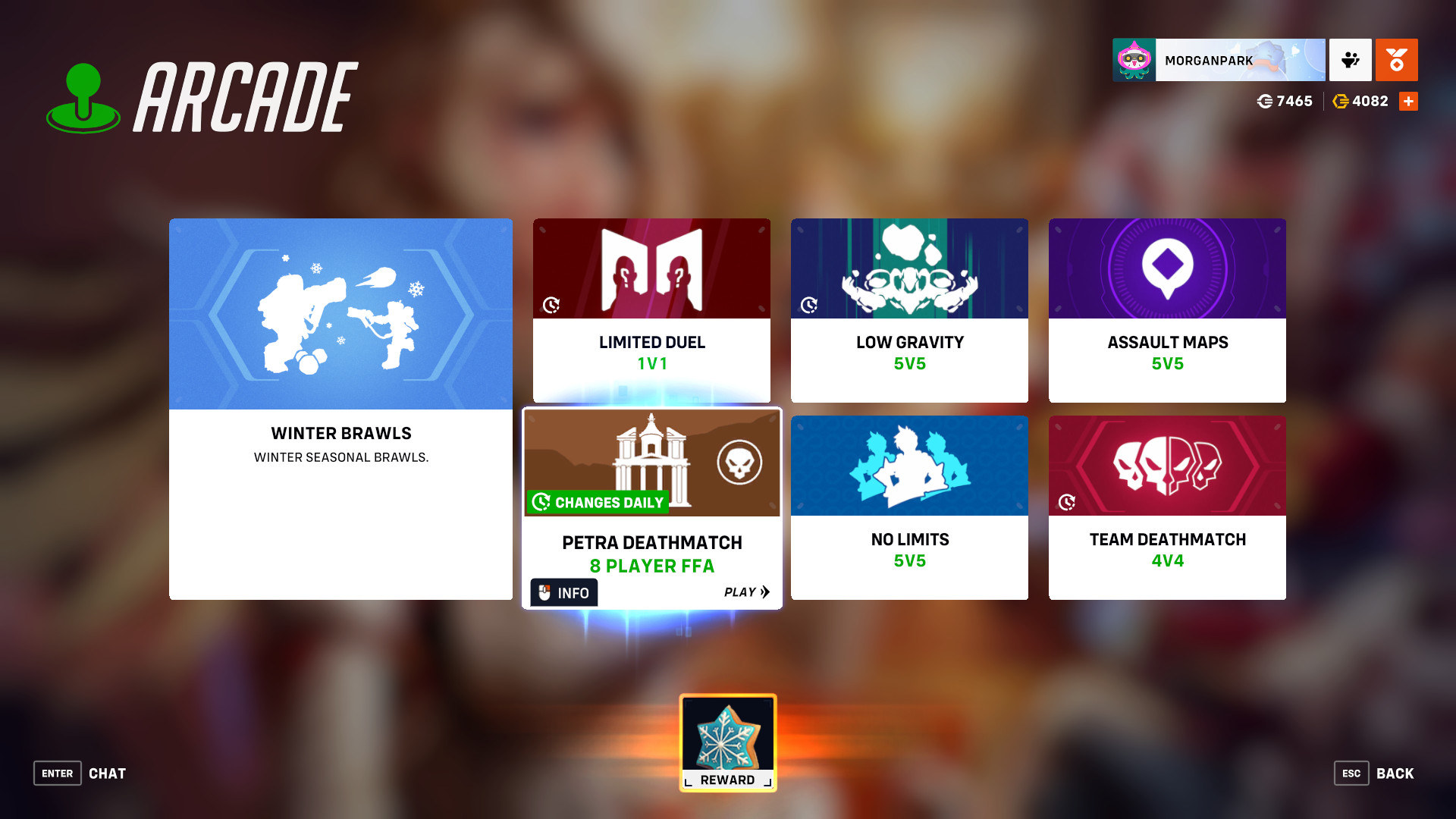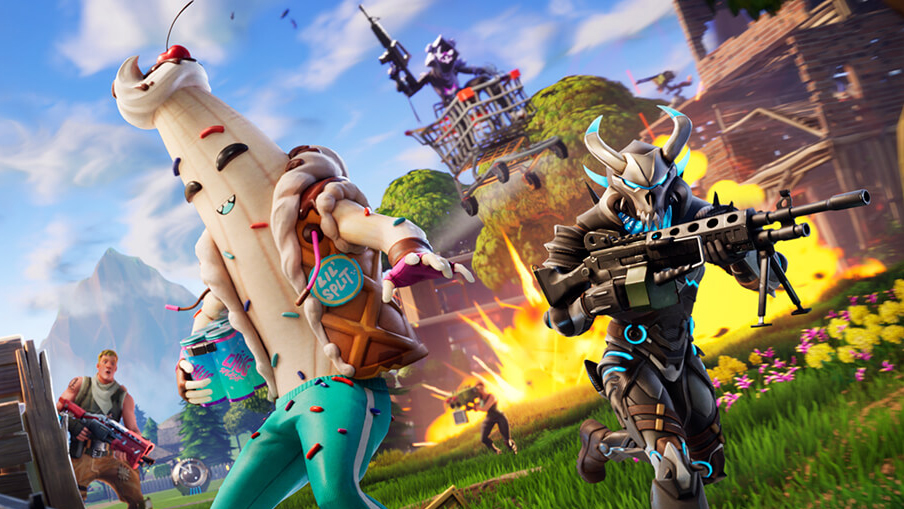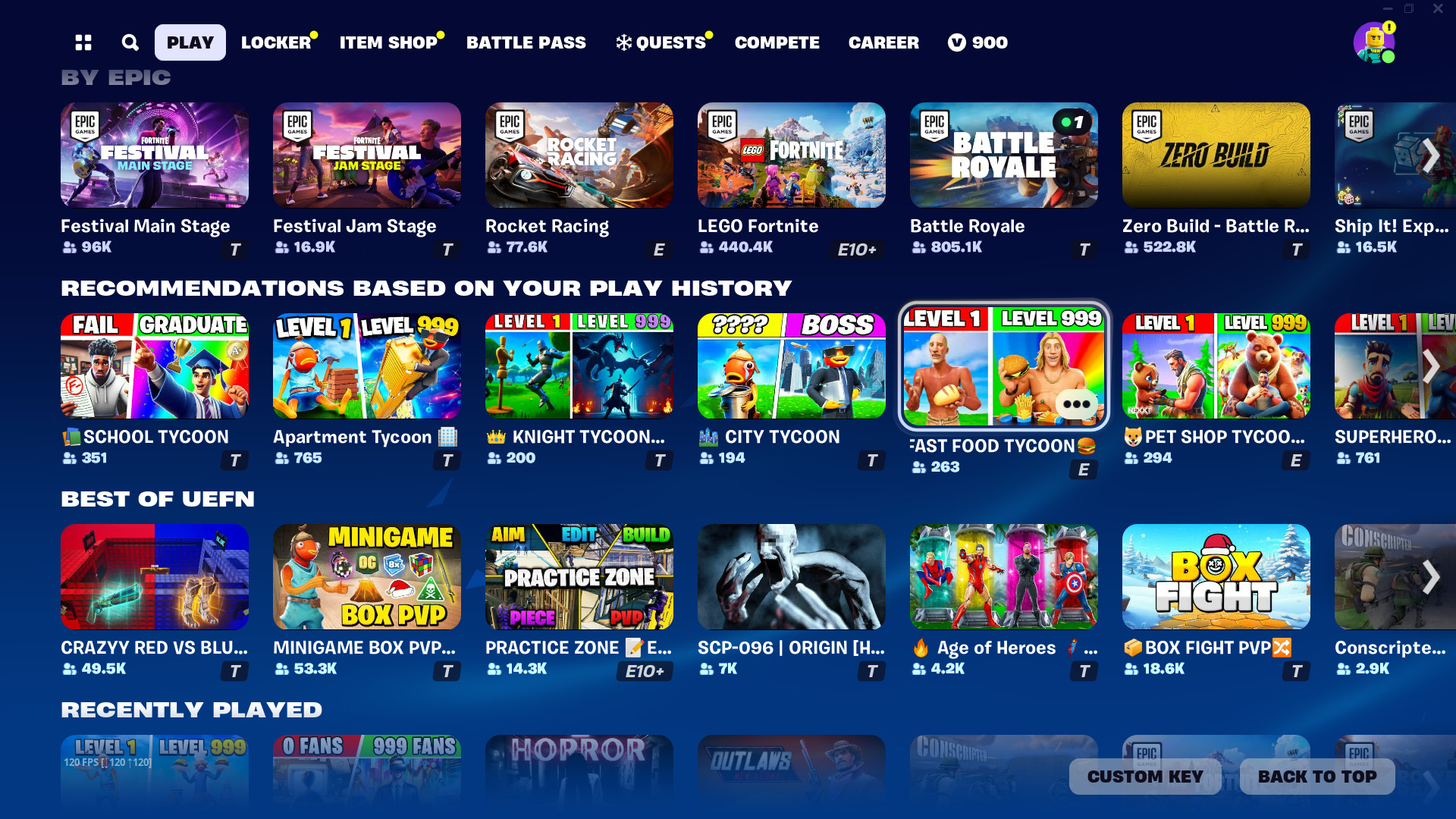Live service gaming's best new trend is actually an old one: letting players decide how to have fun
Multiplayer games are relearning a lesson from 20 years ago.

Do you ever miss when multiplayer games had lots of stuff to do? I was pretty young in the 2000s, but I remember what it was like to fire up an FPS and not be absolutely certain which flavor of shooter I was gonna play. One of a handful of developer-made modes or dozen-plus maps, probably, but if you'd had enough Facing Worlds, Wake Island, or de_dust for the week, your options didn't stop there. In the days of server browsers, finding your own fun was like a little treasure hunt.
That hunt could lead you to a crowded room of strangers sampling a map you've never heard of or an abandoned parking lot where a few randos are playing an absurd custom mode with modded weapons that becomes your whole night. If you were locked on Console Island like me, you might've found similar fun surfing Halo 3's custom games browser.
The idea was to create longevity and value by giving players variety in the ways a game can be played. Then at some point, the goals of publishers and developers changed. Server browsers gave way to matchmaking in console-centric shooters of the late 2000s—a movement that streamlined the journey from menu to match while also stifling the democratized beauty of a curated map rotation.
Then, slowly, our concept of a well-rounded multiplayer suite shifted. Developers didn't have to rely on the fundamental depth of maps or customizable modes when they could create meta depth in RPG-like account progression, gun attachments, and scrapbook-able challenge badges. Our options to personalize playstyles exploded while the formats we played in shrunk. They'd keep shrinking into the live service age as MOBAs popularized hero games where variety is almost entirely defined by a roster of abilities, how they commingle, and how expertly teams can navigate a singular map.
By the time battle passes and seasonal roadmaps became the norm, multiplayer games had done a fascinating 180 from where they started. Modern games are built around one thing they do very well, but only really that one thing: Rainbow Six Siege is 5v5 elimination with killer destruction, Apex Legends is battle royale, and Overwatch 2 is hero-based mayhem. One thing is enough, but I'm starting to crave games that do more again.
I miss when games weren't shackled to one set of rules, and I'm clearly not the only one. Several big games are creating variety in the new (old) ways of letting players determine what "fun" is at the moment, whether that means offering more modes that scratch different itches or creating elaborate mapping tools and faux server browsers.
Several big games are creating variety in the new (old) ways of letting players determine what "fun" is at the moment.
Studios that were once content doing one thing are changing their tunes. Several games are retroactively building diverse playlists by digging up limited-time modes from years past and bundling them in a permanent place. Rainbow Six Siege and Overwatch both call it the Arcade, Apex Legends calls its playlist the Mixtape, and both Valorant and League of Legends simply call it "Rotating Game Modes."
Keep up to date with the most important stories and the best deals, as picked by the PC Gamer team.
It's a smart idea, but it has issues. These afterthought alternatives are often too simple, imbalanced, or don't support many maps. Arcade modes are nice to have, but it's obvious when you're playing something that was originally meant to be available only for a few weeks or months. They're not substantial or important enough to make a game a destination.

Let players make the fun
The more interesting approach to variety is to let players create it. User-generated content is coming back into fashion in shooters, sort of. Halo Infinite isn't super popular, but it's one of the only service games embracing variety in game modes and letting the community decide what's fun at the same time.
It took a while to arrive, but Forge mode and the custom games browser have really spiced things up in the last year. You can jump into the browser at any time and find a few hundred people competing in elaborate parkour courses, inventing a zombie racing mode, playing Slayer on a recreation of Halo 1's Blood Gulch, or find a dozen people skating across a desert at 300mph trying to snipe each other. The other night I burned half an hour playing Hot Potato Tag with grapple hooks and came away convinced 343 Industries should add it to matchmaking.
It's cool that it isn't outside the realm of possibility either. 343 regularly commissions Forge creators to make custom maps that appear in official matchmaking playlists—in fact, Forge maps make up a big chunk of the total map pool right now, and players love it. Halo, originally under the stewardship of Bungie, has long been great at recognizing community creations and legitimizing them.
Halo Tag"
Infinite is not literally the second coming of 2000's server browser culture, especially since these are temporary servers spun up only when someone creates a session, but it has a similar energy.
Battlefield 2042's Portal mode is another example. DICE made the unpopular choice to get rid of server rentals in its most recent Battlefield, but Portal at least lets you spin up a server with customizable rules, bots, and a suite of remade guns, maps, and models from classic Battlefield games. It's more of a "remix" tool than a full-on Forge mode, but it creates variety all the same. Jumping into a Conquest match with grounded Battlefield: 1942 rules is a great palette cleanser from robot dogs and jets. Overwatch 2's Workshop is similar—you can't add new models or maps to the game, but you can change what abilites do, mess with physics, or program complex interactions that've allowed players to create little adventure modes and RPGs.

Fortnite has been a lot more than a battle royale game for a while now, but these days it's more accurate to describe it as a platform like Roblox. Jump into Fortnite today and you're essentially given a blocky server browser that represents what flavors of Fortnite are trending at the moment. The single most popular modes are usually battle royale and Zero Build, but Epic's recent injection of variety in the form of an entire Lego-themed survival game, a Rocket League racing game, and a Rock Band clone are challenging what the "default" Fortnite experience looks like.
I'd wager there are lots of daily Fortnite players who don't even play modes that Epic made. Scroll down a bit and you'll find thousands of popular user-made minigames, custom deathmatch arenas, recreations of the D-Day invasion, or Home Alone-inspired spins on prop hunt. It's remarkable what people are doing with those Unreal Engine For Fortnite tools Epic launched this year.

The downside of live service custom games
I hadn't stumbled on some amateurish project from a passionate modder. I was neck-deep in Fortnite's latest engagement meta.
This week I spent over an hour in a single Game Dev Tycoon-like management game—built in Fortnite—where you passively earn income and build a game dev studio literally from the ground up. You can choose what games to put out, hire programmers, research PC hardware, and supercharge your XP gains by stepping outside your studio to capture a hill that all players on the server fight over. It's really neat, and the game's rough edges, like the incongruent character models that make up your employees or all the ugly floating text give it a Garry's Mod sort of charm that makes its genuinely good qualities more impressive. I'd only planned to play long enough to get the gist, but I got so invested in building new floors for my game dev megaplex that time melted away.
I favorited the mode so I could show friends how unique and cool it was later, but when I got back to the server browser my recommended feed was filled with tycoon games exactly like the one I'd just played—dozens of them that let you run a restaurant, manage a resort island, sell exotic cars, build robots, anything really. That's when I realized I hadn't stumbled on some amateurish project from a passionate modder. I was neck-deep in Fortnite's latest engagement meta.
Fortnite Game Dev Tycoon"
Around the same time that Epic expanded its creative tools for Fortnite, it also gave its community a huge new incentive to make stuff: a profit-sharing creator economy that pays out big for modes that can keep people in Fortnite for as long as possible. It's no wonder idle management games that carefully gate your progression by time are the hotness right now. I was being milked for time spent, just like those YouTubers who make four-hour video essays despite having nothing to say.
The deeper I scrolled, the more it became clear that Fortnite's community browser has become a YouTube-style mess of enticing thumbnails and game titles that over-promise their scope and mislead about their contents just to get people in the door. There's a lot of fun to be had with Fortnite's community browser, and not everything you see is a cynical cash grab, but it left a bad taste in my mouth.

Maybe it matters that a custom games scene has low stakes. Fortnite's continued Roblox-ification will undeniably help it grow as a platform, but it's already affecting what content rises to the top. The spirit of a community that finds new fun in an old game is harder to celebrate when the most popular modes around are thinly disguised engagement farms.
The Halo Infinite and Battlefield 2042 approach of letting custom games be a purely democratic, player-led ecosystem probably means it'll always be a side feature that only a small fraction of the community spends significant time in. But I like it that way. I appreciate that custom games aren't meant to replace Slayer, CTF, or Firefight as the main course—they're the dessert. Obscurity is what makes custom games a treasure hunt, and why finding a new mode you love is more satisfying than playing into an engagement strategy.

Morgan has been writing for PC Gamer since 2018, first as a freelancer and currently as a staff writer. He has also appeared on Polygon, Kotaku, Fanbyte, and PCGamesN. Before freelancing, he spent most of high school and all of college writing at small gaming sites that didn't pay him. He's very happy to have a real job now. Morgan is a beat writer following the latest and greatest shooters and the communities that play them. He also writes general news, reviews, features, the occasional guide, and bad jokes in Slack. Twist his arm, and he'll even write about a boring strategy game. Please don't, though.

